Gothic gardening may bring thoughts of Mary Shelley's
Frankenstein and Victorian novels, but Gothic garden design simply follows the architectural style predominant in Western Europe at the time; from the 12th century, Gothic architecture was characterized by slender vertical pillars and tall pointed arches, with an emphasis on height and open spaces.
The Victorians loved the Gothic style and revived it, both in their architecture — like the British Houses of Parliament, in London — and in their furniture, wallpapers and fabric design, such as that of the Arts and Crafts entrepreneur William Morris. It is this Victorian Gothic revival style that we are most familiar with and that we can use to our advantage to create gardens of mystery and serenity.
Many features of Gothic style, including the careful placement of stonework and statues combined with natural, even wayward, plantings, can fit comfortably in gardens today without turning them into a pastiche of a horror film. Combined with the medieval love of decadent decoration and rich colors, interesting elements of the Gothic style can be woven into contemporary garden design.
Does Your House Have a Medieval Heritage?
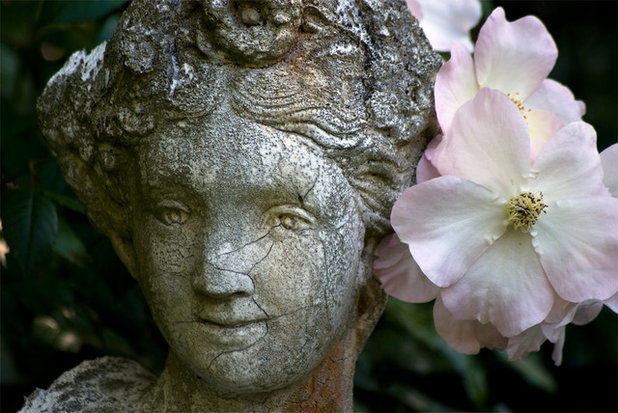
Lenkin Design Inc: Landscape and Garden Design
Gothic gardens can provide the sense of sanctuary we look for in our gardens today, allowing us to escape the stresses of modern life. Though the medieval period in Europe was unsettled, to say the least, with conflict, civil wars and outbreaks of the Black Death, the enclosed gardens built during those times provided some kind of respite from the horrors of daily life.
Through the addition of simple stonework and statuary, and the selection of plants that grow naturally, giving an almost unkempt feel, a Gothic-style garden can be a sanctuary without too much maintenance.
Without doubt, I feel this style of garden design can bring a sense of serenity not usually associated with the term "Gothic." I like to think that the naturalistic plantings create enclosure, like embracing arms, while the statues and old stonework bring thoughts of the past, echoes of antiquity that aren't at all frightening.
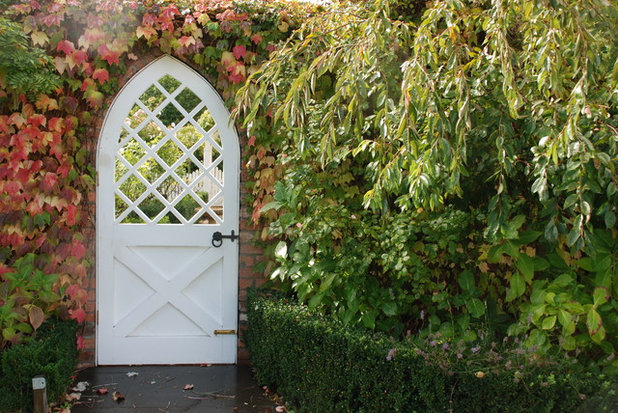
Andrew Renn
Gothic Garden FeaturesThe pointed arch is without a doubt one of the most Gothic architectural features. Often seen in the majestic Gothic cathedrals of northern France and England, the pointed arch took over for the more rounded Romanesque arch in the 12th century. Here it is used as a beautiful gateway, setting the scene for the Gothic-style garden within.
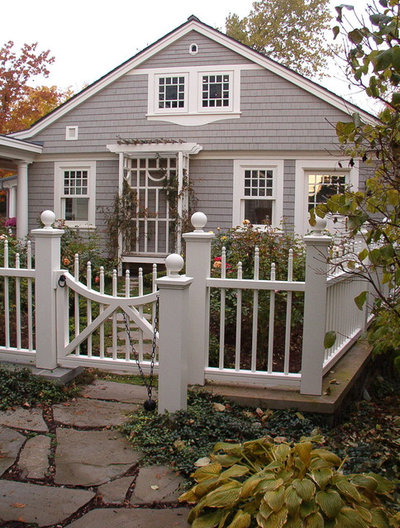
Common Ground Landscapes
Enclosed Gothic gardens don't have to be dark and claustrophobic. Gothic buildings, such as the great medieval cathedrals of Europe, were light and airy, with a great feeling of space. Open fencing with thin, upright rods will help create the feeling of verticality so beloved by Gothic architects.
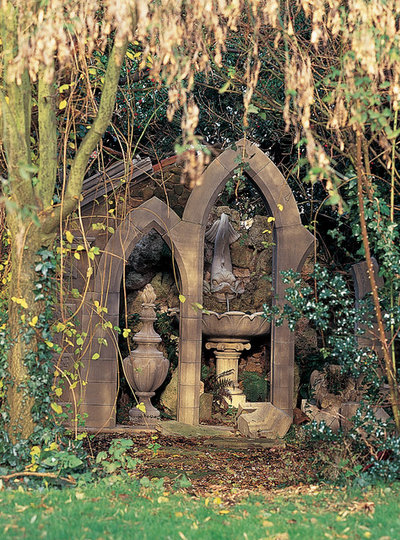
Haddonstone Ltd
To many, Gothic gardens inspire mysterious thoughts, but stonework doesn't have to bring visions of cemeteries and tombstones. Arched windows, pillars or even just sections of stonework can add that touch of mystery while also creating a great framework for climbing plants. Old stonework can be found in reclamation yards; realistic reproductions, such as these, are also available.
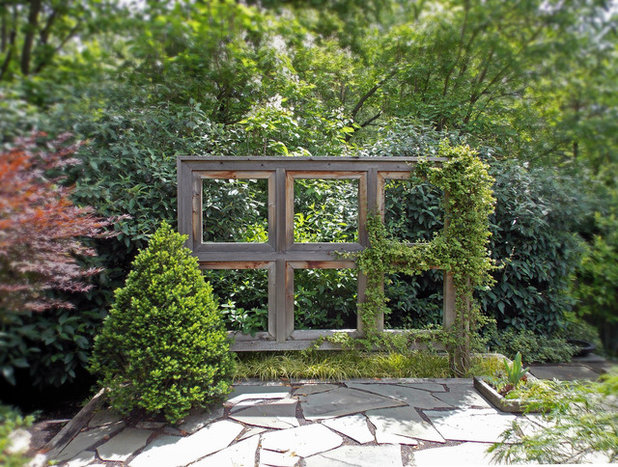
Goessling Design
With climbers twining through, this wooden frame serves the same purpose as stonework. Though simple in design, it has the Gothic attributes of height and space while also providing a framework for climbing plants. If you consider yourself handy, it would be quite easy to construct this frame with a hardwood that would weather to a nice warm gray.
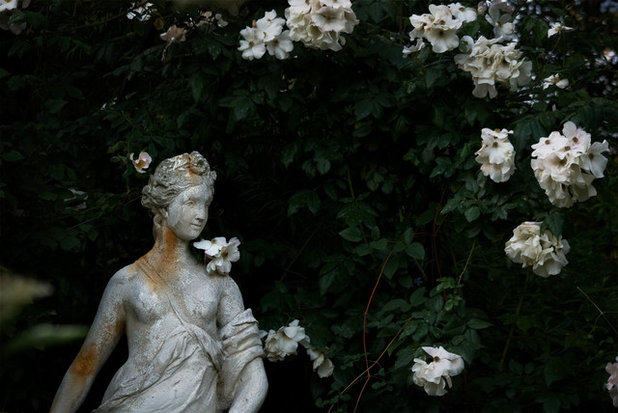
Lenkin Design Inc: Landscape and Garden Design
The careful use of statues really brings the Gothic feel to a garden — angels or mythical creatures being the favored types. Older, weathered statues are best, but you can paint new ones with live yogurt to get a good growth of algae, making them appear older.
Unlike formal gardens, where statues are isolated and featured, statues in the Gothic setting tend to be almost hidden by climbers. Ivy is possibly the favorite, but simple white climbing roses, like the Sally Holmes rose shown here, can provide a stunning contrast to the stonework.
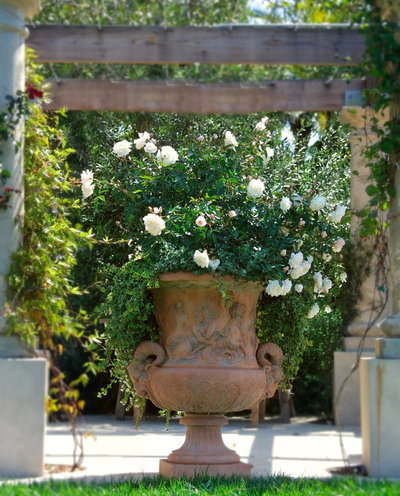
Margie Grace - Grace Design Associates
Plants of a Gothic GardenRoses should be included in your Gothic garden. They were a favorite in medieval art and tapestries, and even the Victorians, including William Morris, used them in wallpapers and fabric design.
Go for the simple colors and forms; red and white bush or climbing roses create a classic feel, though some of the modern David Austin roses would also give a rather wild, romantic look growing through stonework or planted in aged urns or containers.
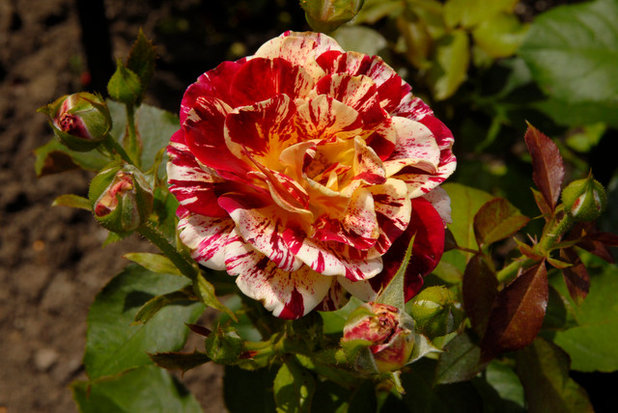
The New York Botanical Garden
A real winner is a rose that combines both strong Gothic colors and conjures the medieval rose
Rosa damascena 'Versicolor', which was said to combine the rose colors of the Houses of York and Lancaster, which fought over England in the Wars of the Roses.
This modern rose variety, floribunda George Burns, would make a perfect replacement for the
Rosa damascena, though it does have touches of yellow within some of the blooms.

Beertje Vonk Artist
The perfect white rambling rose for scrambling through greenery and stonework is
Rosa filipes ‘Kiftsgate’. In early to mid-July it is covered in panicles of white blooms and resembles a cascading waterfall.
This recommendation comes with a warning, though. I have seen it growing at its birthplace, Kiftsgate Gardens, which is just down the lane from the famous Hidcote Gardens in the English Cotswolds, and it is a rampant climber, growing high into the tops of mature trees.
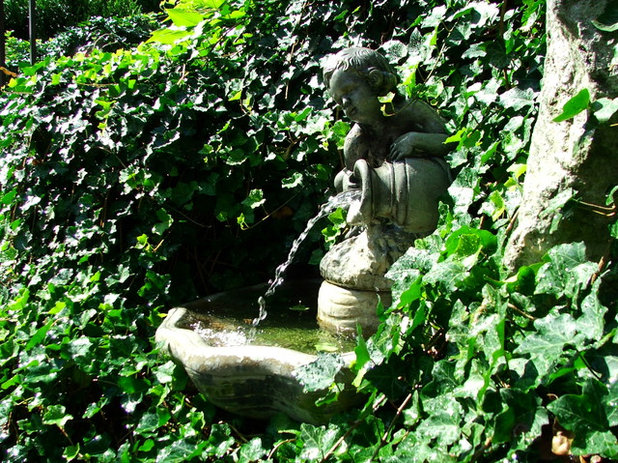
Fullmer's Landscaping, Inc
Evergreen English ivy,
Hedera helix ‘Thorndale’ (shown here),
is the other mainstay of Gothic planting. Allow it to scramble over stonework and grow up walls to soften outlines, or use it as a great ground cover even in the deepest of shade.
Ivy is happy to grow on wire supports, so it is easy to create simple topiary shapes that will be quickly covered by the ivy.
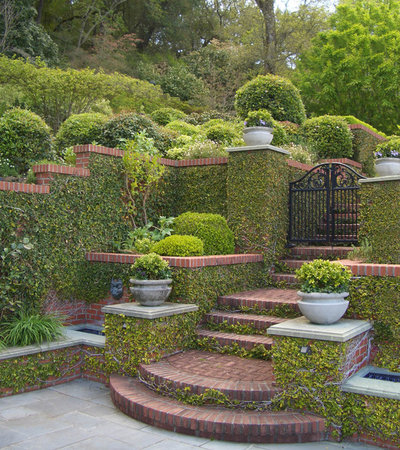
Zeterre Landscape Architecture
Here climbing plants are used in a totally different way, turning brickwork into almost living architecture, reminiscent of buttresses of Gothic buildings.
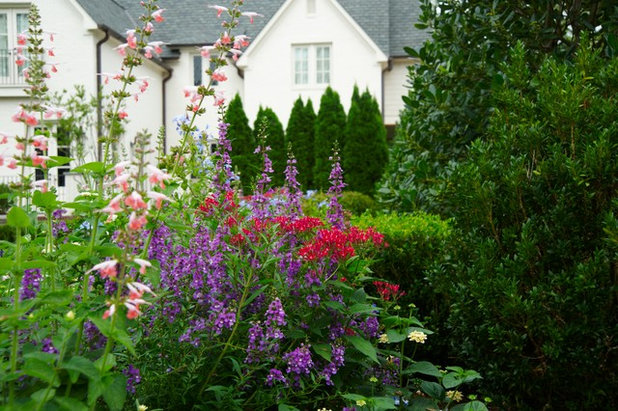
Troy Rhone Garden Design
With weathered stonework and statues combined with the dark foliage of ivy and roses, you would think that a Gothic garden would be rather funereal.
But Gothic style also includes the rich colors of the medieval period. Plants with flowers of dark blue, deep red and purple, echoing the brocades and velvets of the period, stand out against dark foliage and light up the garden with the brightness of a William Morris wallpaper.
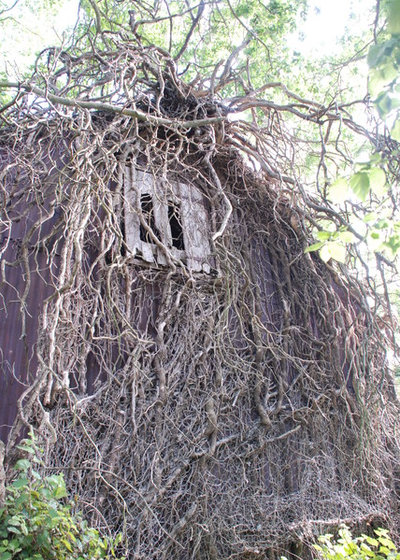
Earthwork Landscape Architects
Even the skeletons of long-dead plants can be used to advantage in the Gothic garden by helping to provide a sense of mystery and enchantment. Here the vines of dead ivy cover a building wall and have almost taken over the landscape.
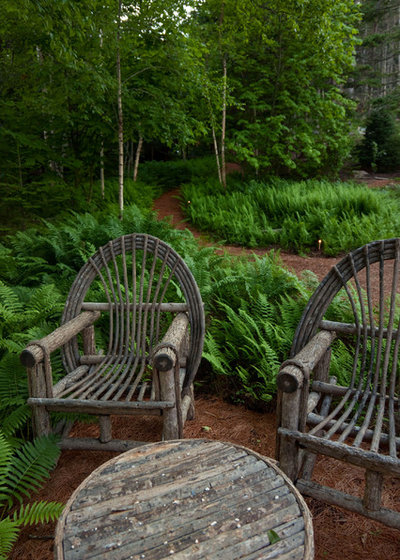
Matthew Cunningham Landscape Design LLC
Once the garden is complete, plants have been left to their own devices and the right atmosphere has been created, it's time to sit back — in your Gothic pointed-arch chair, of course — to enjoy the mystery and serenity you have created.
More: Does Your House Have a Medieval Heritage?





